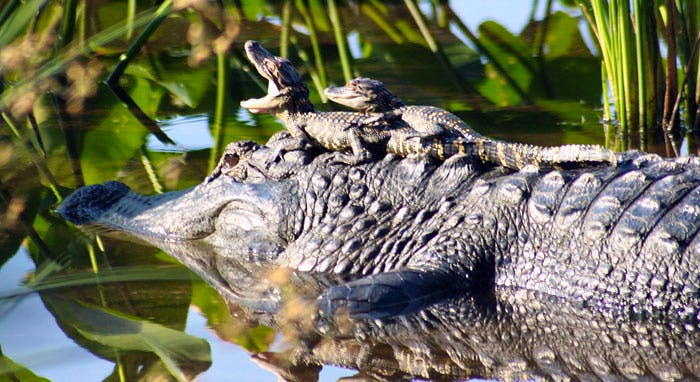Being a good mother isn’t always easy in the world of wildlife. With all the elements to overcome in the wild – finding enough food, fending off predators – it’s hard enough without a fragile new little baby to contend with. A mother has to invest a great deal of time and energy getting her young off to a successful start, and she is often the sole provider. So here is a nod to these hardworking wildlife moms and the painstaking effort put into supplying the next generation of imperiled animals with the resources and skills needed to make for a prosperous start.
Northern Fur Seals
To birth and begin to raise young, mother northern fur seals haul out of the water onto beaches called rookeries or natal sites where they were born. The female gives birth to a single pup, and the bond between them is crucial: In a sea of seals, a single pup can get easily lost. Hundreds of thousands of seals can crowd into the rookery at a time. Among such masses, the mother and pup must learn each other’s voice and smell to find one another after prolonged hunting forays where the mother goes off to feed at sea for days at a time. Studies have shown that the mother and pup can even recognize each other’s voices after a four-year separation!

American Alligators
Alligator mothers will scout out a secluded section of bank and build a nest of mud, sticks and vegetation where they’ll lay between 20 and 50 eggs. The rotting “compost pile” she has created produces enough heat to keep the eggs warm. Once they’re born, momma will carry the babies to the water in her jaws for protection against testy males and other predators. When all is clear, she’ll tenderly open her maw and let the young take to the water. When no threats are present, she may also carry the babies on her back or head.

Mountain Goats
In the hidden cliffs of her territory, the mother mountain goat introduces her young to the vertical world that is home. Within an hour of birth, the kid will already try climbing the sheer cliffs under mother’s watchful eye. After rearing one to two kids, momma will join a group of nursing females and continue to nurse for a month, though the kid will remain close for the first year. The mother mountain goat goes to great lengths to make sure her baby is safe from danger: She will stand over it in a faceoff with a predator and, when the going is especially steep, she’ll place herself below her young to prevent a free-fall.

Polar Bears
Polar bear mothers, which almost always produce two cubs at a time, dig a den deep in the snow, protected from the elements, where they will birth their young during December or January. In the months preceding birth, the momma puts on as much fat as she can to prepare for her winter fast – more than 220 pounds! Once her cubs are born, the three bears stay in a hibernation-like state for the rest of winter’s coldest months. Under the snow, she nurses and keeps her cubs warm. While they grow, she loses weight with the constant production of 33 percent fat-rich milk that the cubs need to survive. The mother will undergo a fast of up to eight months, using up the last of her reserves for the sake of her growing cubs. Once they emerge from the burrow, the mother immediately needs to eat, and from her, the cubs learn to hunt.

Jaguars
After a 100-day gestation, a female jaguar gives birth to up to four completely helpless cubs. She’ll tuck them away in a secluded burrow where they are protected from other jaguars, since males looking to breed can be a threat to cubs. A den mother like this big cat is one not many would want to contend with, and she will fight off big males if she has to. Once the little jaguars graduate from their mother’s milk after a few months, she will hunt and regurgitate food for them. Soon she’ll start to teach them how to hunt and protect themselves. After around two years, they’ll move off to find their own territory, although the females will stick close to mom.

Right Whales
Once pregnant, the female North Atlantic right whale will migrate about 1,400 miles south to breeding off the coast of Georgia and Florida. There she births a 400 pound calf the length of a large pickup truck. With her calf, the mother right whale makes the long journey north to the rich waters of the Bay of Fundy where they’ll feed together for the summer. Right whales are doting mothers. The tight-knit bond between her and her calf is played out in an array of close contact motions: the calf will ride on its mother’s back, the two will engage in head bumping, and the mother will even roll over to embrace the baby in her flippers. The right whale calf will continue nursing and is dependent on its mother for a year before it’s weaned.

Stacey Hollis, Defenders of Wildlife Intern




